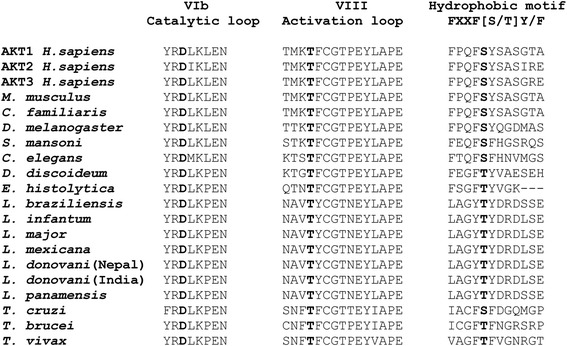Fig. 4.

Differences in the amino acids involved in AKT phosphorylation in the RAC/AKT-like protein family. The alignments of the distinct VIb catalytic loop, VIII activation loop and hydrophobic motif, where D is important for phosphotransference, T for AKT phosphoactivation, and S for AKT activity potentiation, respectively, are shown, with the above amino acid residues highlighted in bold. RAC/AKT-like proteins from Leishmania spp. have T instead of S in the hydrophobic motif. Likewise, proteins derived from T. brucei and T. vivax have T instead of S, whereas T. cruzi shows the same S residue as the human AKT1
